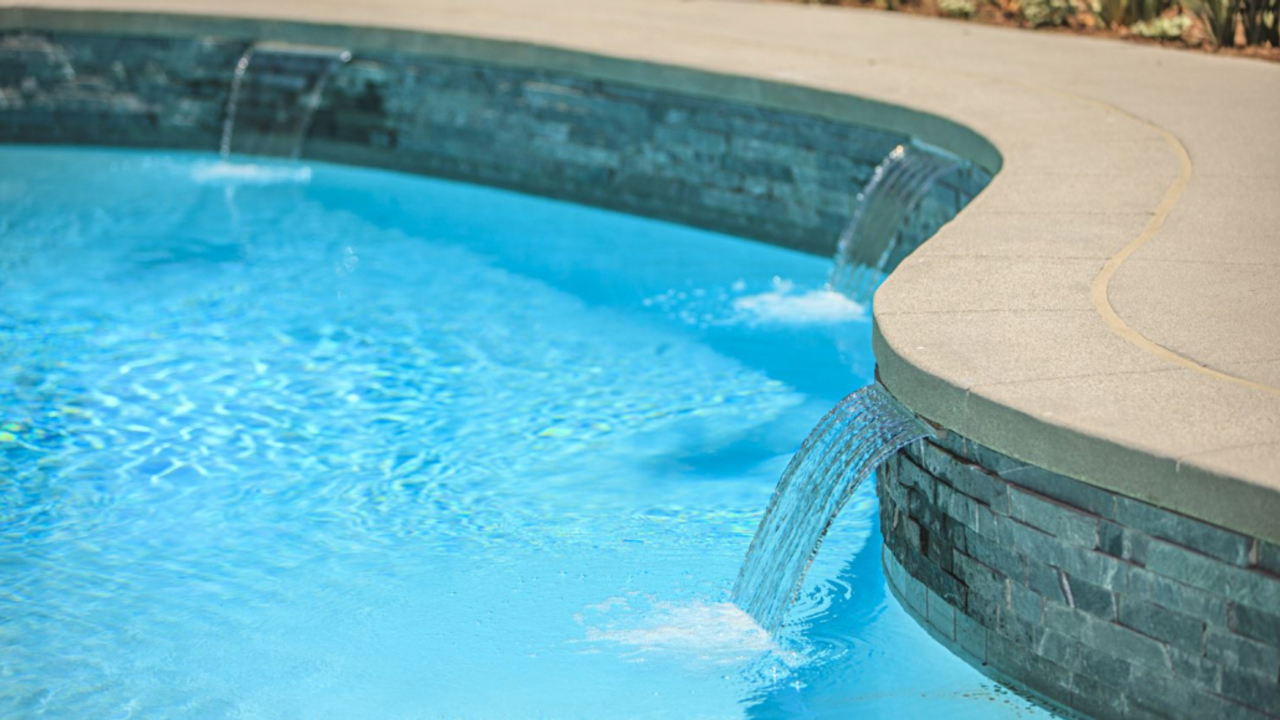Above-ground pools are a popular choice for homeowners seeking to beat the summer heat, adding a touch of luxury to their outdoor spaces. These pools offer convenience and recreation, transforming ordinary backyards into havens of leisure.
However, installing an above-ground pool is not as simple as filling it with water and jumping in. Ensuring that the pool is safe, levelA level is a tool used to determine whether a surface is horizontal (level) or vertical (plumb). It ..., and structurally sound requires careful planning and often the use of a retaining wall.
Retaining wallsRetaining walls are structures designed to hold back soil and prevent erosion in landscapes with var... play a crucial role in supporting above-ground pools. They are not merely functional but also add an element of beauty to your backyard landscape. In this blog, we will explore why retaining walls are essential for above-ground pools, the best materials for the job, and the steps to ensure a safe and sturdy installation.
The Role of Retaining Walls for Above-Ground Pools
- LevelingLeveling is the process of creating a flat, even surface in preparation for construction or landscap... the Playing Field: One of the primary functions of a retaining wall in this context is to level the ground. Above-ground pools must sit on a perfectly flat surface to prevent issues with stability and weight distribution. If your yard has uneven terrain, a retaining wall helps create a level and safe foundation.
- Preventing Erosion: Retaining walls are excellent at preventing soil erosion. When you install an above-ground pool, it can disrupt the natural flow of water in your yard. Without proper support, the soil can erode around the pool's base, leading to instability and potential damage.
- Containing the Weight: Above-ground pools can hold thousands of gallons of water, which translates into a significant amount of weight. A well-constructed retaining wall ensures that this weight is distributed evenly and prevents the pool from shifting or sinking into the ground.
Choose the Right Material
The success of your retaining wall largely depends on the choice of material. Here are three popular options:
- ConcreteConcrete is a composite material made from a mixture of cement, sand, gravel, and water. It is one o... - Concrete is a robust and durable choice for retaining walls. It can bear the weight of an above-ground pool with ease. Its versatility allows for various designs and finishes, so you can achieve both function and aesthetics.
- Stone - Natural stone retaining walls offer a timeless and attractive solution. They harmonize with the surrounding landscape, creating a seamless and picturesque environment.
- BrickBrick is a building material made from clay, sand, and water, molded into rectangular blocks and fir... - Brick retaining walls are another durable option, offering both strength and visual appeal. They are available in various colors and can be arranged in different patterns for a customized look.
The Height of the Retaining Wall
The height of your retaining wall is a critical consideration, as it depends on factors such as the height of your above-ground pool and the slope of the ground. To ensure the pool's safety and stability, the retaining wall should be at least 12 inches higher than the top of the pool.
Safety Guidelines for Installation
Installing a retaining wall for an above-ground pool involves specific safety guidelines:
- Level Ground - The retaining wall must be built on a level surface to maintain its structural integrity.
- Proper Drainage - Excavate the area behind the retaining wall and fill it with gravelGravel consists of small, loose, rounded or angular stones, typically ranging in size from a few mil... or crushed stoneCrushed stone is a form of aggregate composed of rocks that have been broken down into small, angula... to ensure adequate drainage. This prevents water accumulation behind the wall, which can lead to instability.
- Anchoring - Properly anchor the retaining wall to the ground to prevent collapse. This can be done using rebar or geogrid.
- Regular Inspection - After installation, regularly inspect the retaining wall for any signs of cracks or damage. Address any issues promptly to maintain its strength and durability.
A retaining wall is an essential element in supporting an above-ground pool. It ensures a level surface, prevents erosion, and distributes the pool's weight evenly.
Choosing the right material, adhering to safety guidelines, and conducting regular inspections are key to a successful installation. With a well-constructed retaining wall, you can enjoy your above-ground pool with peace of mind, knowing that it is safe and stable for years to come.
The Building Process
Building a retaining wall for an above-ground pool is a project that requires planning, precision, and the right techniques. Here is a step-by-step guide on how to ensure your retaining wall provides the necessary support for your pool:
- Select the Location - Choose the location for your above-ground pool, considering factors like accessibility and adequate sunlight. This step is crucial as it sets the foundation for the entire project.
- Design the Retaining Wall - Once the location is determined, design your retaining wall. Consider the size, shape, and materials to be used. This is where you can get creative and match the wall's design with your backyard's aesthetic.
- Prepare the Ground - Before the retaining wall can be built, prepare the ground. Remove any vegetation, ensuring that the area is clear. Level the ground and make sure it is completely flat. Additionally, consider the drainage aspect to avoid water accumulation behind the wall.
- Choose the Right Material - Depending on your design, choose the appropriate material for your retaining wall. For a rustic look, natural stone or brick may be ideal. If you prefer a modern design, consider concrete, which can be molded into various shapes and sizes.
- Safety Anchoring - To ensure the retaining wall doesn't collapse, it must be properly anchored. Rebar or geogrid can be used for this purpose, providing stability and strength.
- Backfill with Gravel or Crushed Stone - Proper backfillingBackfilling is the process of refilling an excavated area with soil, gravel, or other materials afte... is essential for drainage and to prevent the soil from exerting too much pressure on the retaining wall. Gravel or crushed stone can be added for effective drainage.
- Regular Inspection - After the retaining wall is installed, regular inspections are necessary. Look for any signs of cracks or damage and address them immediately. This maintenance ensures the wall's long-term durability.
By following these steps, you can be confident in the safety and effectiveness of your retaining wall, providing the essential support your above-ground pool needs.
Create Your Ideal Backyard Oasis with a Custom Above-Ground Pool Retaining Wall from West Hills Masonry
Ready to enhance your backyard with an above-ground pool supported by a sturdy and beautifully designed retaining wall? Look no further than West Hills Masonry, your trusted hardscape contractor.
Our experienced team can bring your pool installation dreams to life, ensuring it's not only functional but also aesthetically pleasing. Your ideal backyard oasis is just a call away. Contact us today at 714-519-5009 to get started on your above-ground pool project.
Let's make your pool days even more enjoyable with the right support and style.

 Carlos Gonzales
Carlos Gonzales